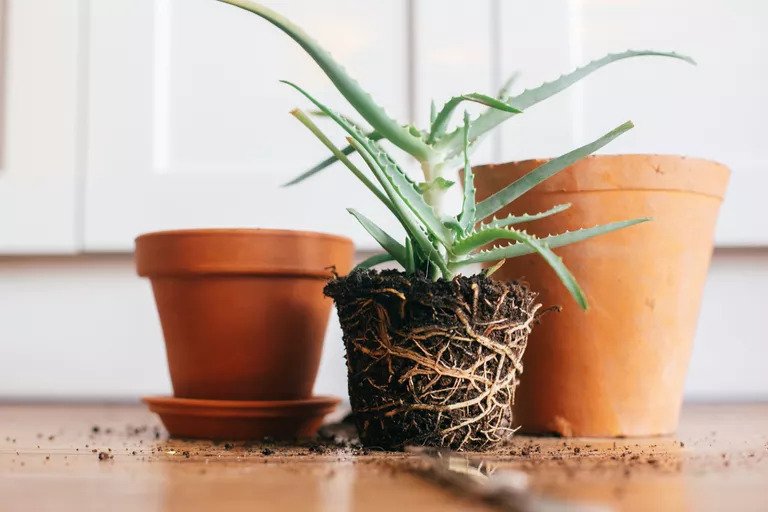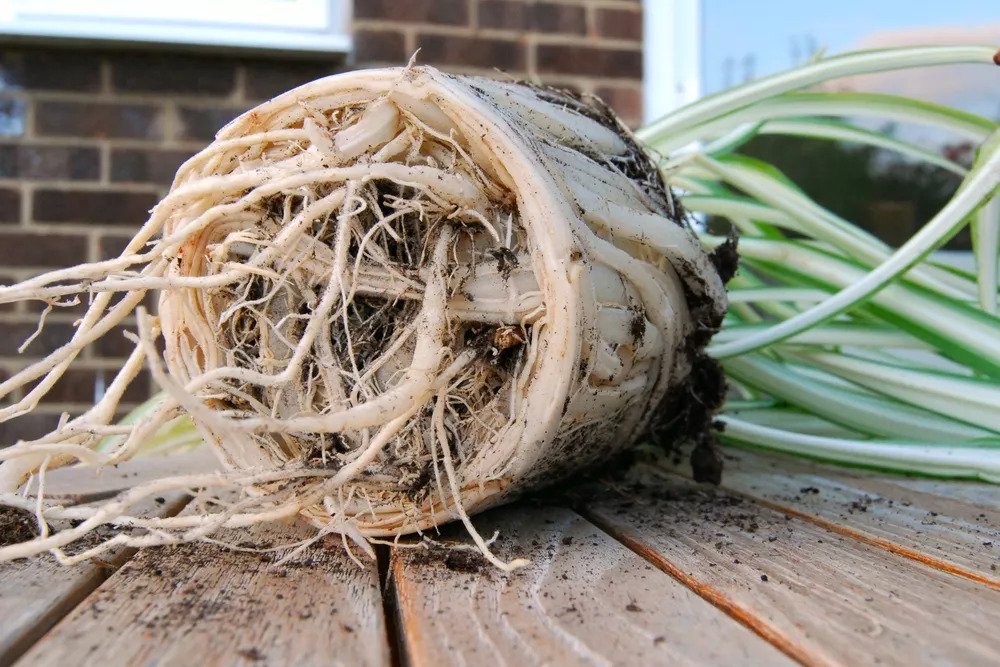How to Repot Your Houseplants to Keep Them Happy
Houseplants need repotting every few years and spring is the time to do it.
When you think of plants covering the lush forest floor, it's easy to imagine their roots slinking through the soil, shooting forth in their heroic hunt for water and nutrients. When we take those plants inside and put them in pots, often times their roots don't exactly know how to obey the new confines. They keep growing and growing, winding around themselves in a tangle until the plant becomes root-bound. At that point, growth is inhibited and the plant begins to suffer.
The solution, of course, is to give them a new home. Some plants take well to tight quarters (like chives, peace lilies and ficus), but for most of them, they need to be repotted every few years – and according to The Washington Post garden columnist, Adrian Higgens, the time to do that is spring, because it's when plants want to grow.
You can tell if a plant is root-bound when its root begin to escape from the drainage holes; or when you remove the plant and the roots look crowded and compacted. Another sign is when the plant is failing to thrive, despite otherwise favorable conditions.
The actual work of repotting a plant is pretty straightforward, but since it requires some manipulation of tender roots, it can feel a little daunting for the uninitiated, but here's the gist:
How to repot a houseplant :
Supplies: A 1" to 2" larger pot, potting soil, scissors or a knife.
- Water the plant well the day before; this will lessen the stress to the plant and make the roost more pliable.
- Remove the plant from the pot. Higgens says that if it is really root-bound, you may need to break the pot. I have never had to do that and I would hate to ruin a good pot.
- Once you've liberated the plant, you need to loosen up the compacted roots. I have only ever used my fingers to gently pull and detangle, but Higgens says you may need tools. The idea is for the roots to be redirected from their pot-shaped tangle. If necessary, you can prune up to 25 percent of them. Higgens writes:
- "The finer the roots, the more gentle you should be. One way to work them loose with minimum harm is to wash away the old soil with a light stream of water, preferably not ice cold.
- On roots that are fine but stringy, trim them back with scissors. If they are thick and compacted, you can use a knife to score the sides. On really congested roots ... you could use a sharp knife or even pruning saw to remove the bottom inch or so, and then take a three-pronged soil cultivator to liberate roots from one another and the old soil."
- Add some potting soil to the bottom of the larger pot, enough that when you place the plant on top of it, the top comes to the same level it was in the previous pot. Holding the plant straight with one hand, scoop in new soil with the other.
- To remove air pockets, tap the pot along the way, press down on the top, or water to help the soil settle – and then top it off with more soil if it needs it.
- Water, and let the plant recuperate out of direct sun for a few days. Water again when the top feels dry and resume its regular watering schedule. Don't add fertilizer until new growth appears, which may take a few weeks.








No comments